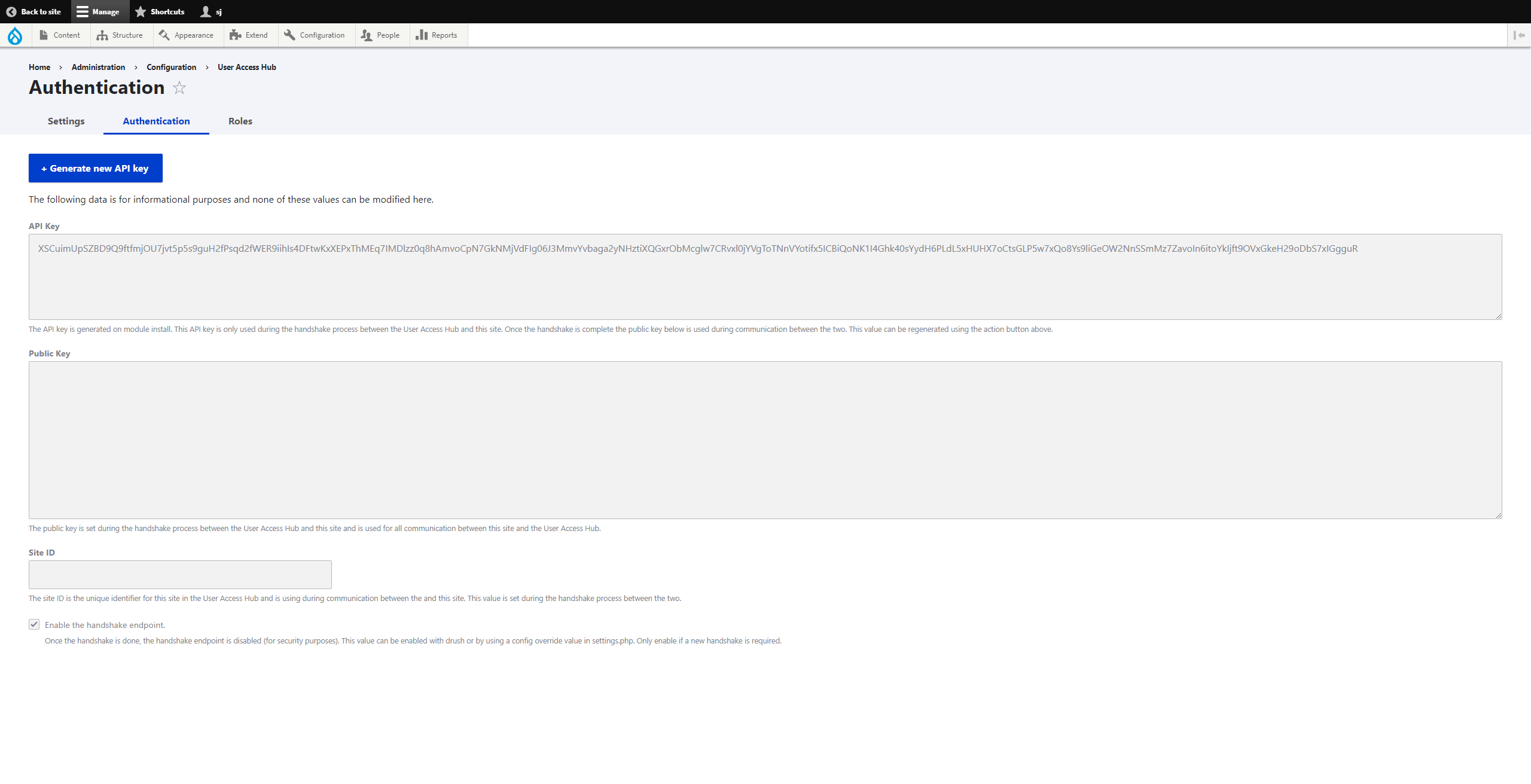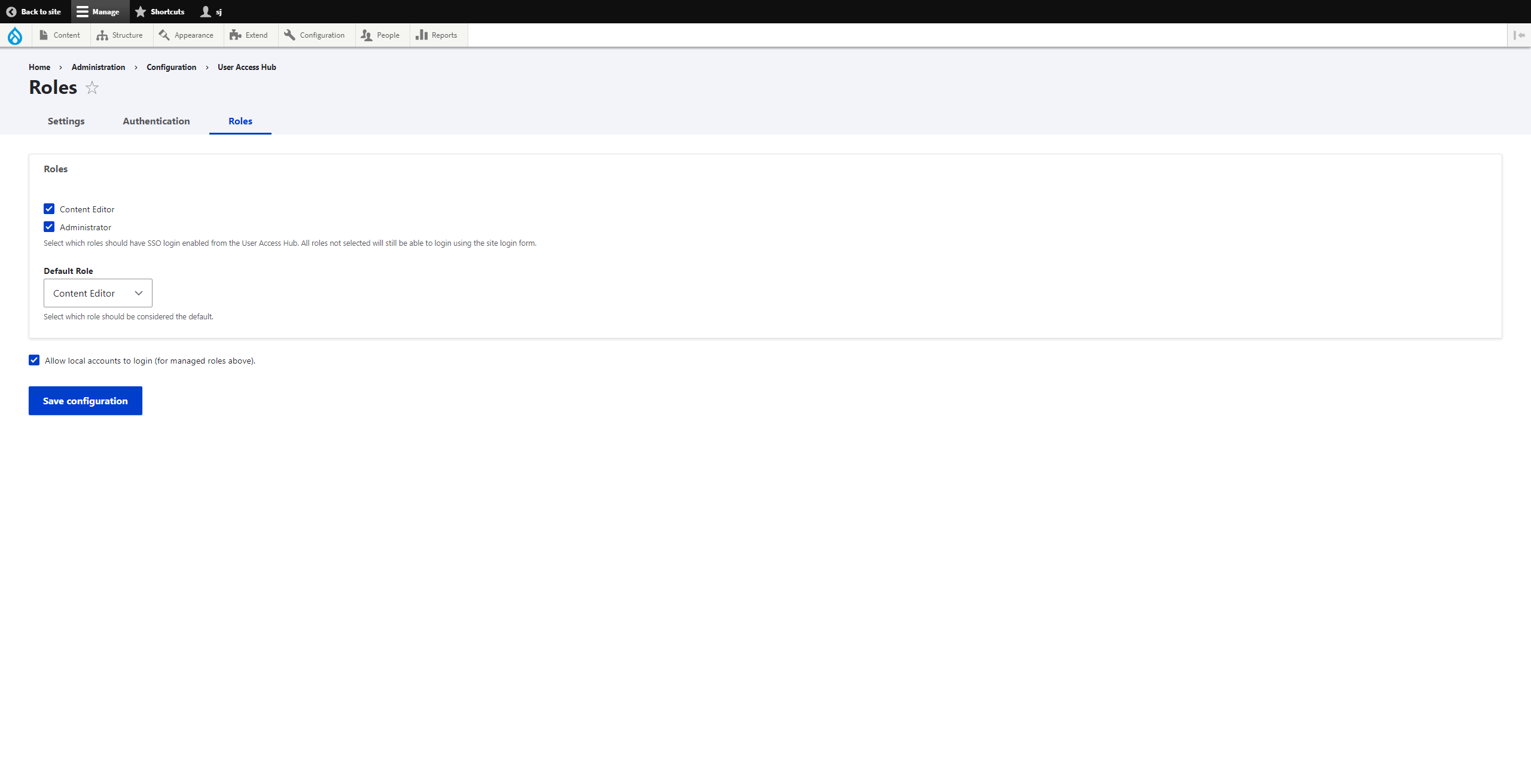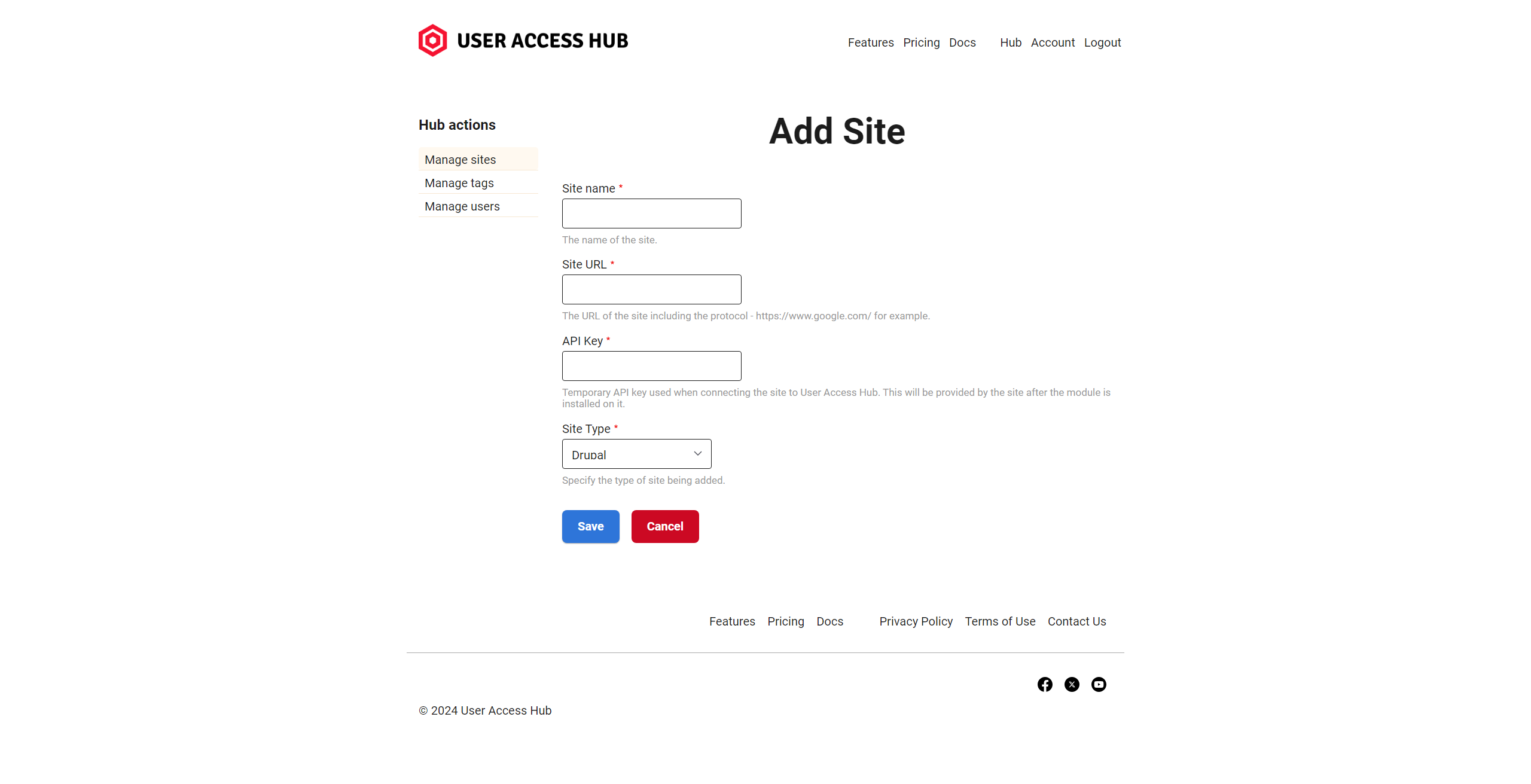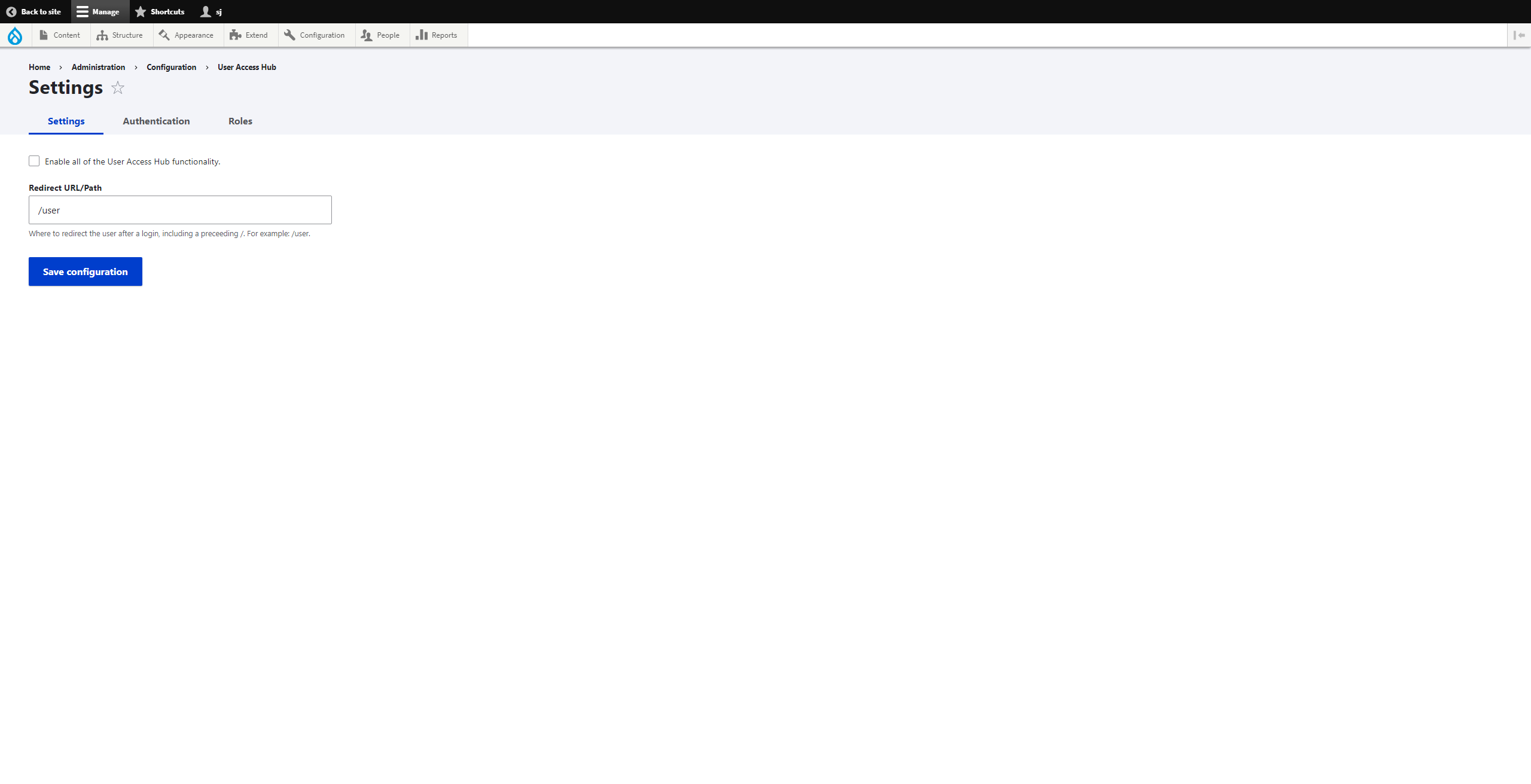Installation
Installing the User Access Hub Drupal module is as easy as installing any other module. Follow these steps:
- Visit the User Access Hub Drupal project page.
- Use composer to install the module:
composer require drupal/useraccesshub - Enable the module in the backend (Administration > Extend) or with drush:
drush en useraccesshub
There are many other ways to download and install this module if composer is not available. These methods are documented on the Installing Modules page of the Drupal.org site.
Configuration
Enabling the module will create an API key at Configuration > User Access Hub > Authentication. None of the fields on this form can be edited through the UI. The 'Enable the Handshake Endpoint' checkbox should be checked.

Select the roles that should be handled by the hub's SSO functionality at Configuration > User Access Hub > Roles. Select the default role.

Add the site to the User Access Hub, setting the API key that was generated above.

In the hub, use the 'Connect' operation to allow the hub to handshake with the site. Once this is complete, settings on Configuration > User Access Hub > Authentication will be updated - 'Public Key' will be populated, 'Site ID' will be populated and the 'Enable the Handshake Endpoint' checkbox will be unchecked.
To enable all User Access Hub functionality, the final step is to check the 'Enable all of the User Access Hub functionality.' checkbox on Configuration > User Access Hub > Settings.

Roles
The Drupal core roles of 'Anonymous' and 'Authenticated' are not available on the Configuration > User Access Hub > Roles form. Anonymous users do not need to login and all users that are created will also get the 'Authenticated' role. User Access Hub is meant to be used with defined site roles, however selecting the 'Default' role for a user in the hub will assign the default role to the site user when they login through the User Access Hub.
